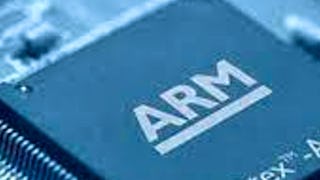This course covers diverse aspects of mechatronics, electric vehicles (EVs), medical devices, and Cyber-Physical Systems (CPS). The Automotive Mechatronics module provides participants with a deep understanding of essential components, emphasizing the analysis of Electronic Control Units (ECUs) and the application of various sensor types and Advanced Driver Assistance Systems in critical automotive functions. The course culminates in the practical implementation of CAN interface integration with the STM32F407 microcontroller in automotive electronics. It delves into the workings and applications of digital stethoscopes, advanced thermometers, ultrasound machines, and more. Participants gain hands-on experience in setting up a remote health monitoring system using Arduino Nano, showcasing real-world applications of embedded systems in healthcare. Furthermore, it focuses on the on-board electrical system, 48 V system understanding, DC-DC converters, and the traction motors, on-board chargers, and various motor configurations in electric vehicles. Participants will gain concepts for the design and development of a 5 Degree Freedom Robotic ARM for industrial automation. It covers pneumatic and hydraulic systems, solenoid control valve components, Denavit–Hartenberg Parameters, and provides hands-on experience in assembling and testing a 5DOF robotic arm using Arduino Nano.

Enjoy unlimited growth with a year of Coursera Plus for $199 (regularly $399). Save now.

CPS Design for Mechatronics, Healthcare, EV & Robotics
This course is part of VLSI chip design with CPS for Industrial Applications Specialization

Instructor: Subject Matter Expert
1,603 already enrolled
Included with
Recommended experience
Skills you'll gain
Details to know

Add to your LinkedIn profile
4 assignments
See how employees at top companies are mastering in-demand skills

Build your subject-matter expertise
- Learn new concepts from industry experts
- Gain a foundational understanding of a subject or tool
- Develop job-relevant skills with hands-on projects
- Earn a shareable career certificate

There are 4 modules in this course
This comprehensive module delves into the intricate world of automotive Mechatronics, exploring its fundamental components and cutting-edge technologies. From Electronic Control Units (ECUs) to Advanced Driver Assistance Systems (ADAS), participants will grasp the essence of vehicle systems, sensors, control mechanisms, and embedded technologies essential in modern automobiles. The module navigates through ABS, power steering systems, fuel injectors, and HVAC systems, elucidating their functionalities, applications, and advancements in embedded electronic control. Additionally, it covers the principles and applications of sensors like LIDAR, SRR, and Radar, alongside their integration with microcontrollers, ensuring a profound understanding of vehicle technology.
What's included
22 videos4 readings1 assignment
This module offers an in-depth exploration of critical medical devices and diagnostic systems, providing participants with a profound understanding of their inner workings, components, and real-world applications. Participants will delve into the intricacies of cutting-edge medical electronics, spanning digital stethoscopes, advanced thermometers, blood pressure measuring devices, glucose monitoring systems, ultrasound machines, MRI systems, X-ray and CT scan machines, dialysis equipment, endoscopic systems, and remote health monitoring setups. The module guides participants through the complex landscape of medical diagnostics, from signal processing in stethoscopes to the intricate imaging modes of ultrasound machines. Additionally, the module will guide participants through a practical demonstration of setting up a remote health monitoring system using the versatile Arduino Nano, showcasing the real-world application of embedded systems in healthcare.
What's included
23 videos1 assignment
This module delves into the intricacies of electric vehicle (EV) technologies, focusing on the on-board electrical system and various components crucial for efficient performance. Participants will gain insights into the advantages of utilizing a 48 V system, understand the role of a 48-Volt starter generator, and explore the functionality of key components in a 48V Belt Starter Generator through detailed block diagrams. The module further covers the significance of DC-DC converters, their working principles, and the role of embedded systems in controlling multi-kW DC-DC converters in electric vehicles. The module proceeds to elucidate the concept of traction, providing an in-depth understanding of traction motors, power generation, and the essential components for power control with embedded systems. Participants will also grasp the intricacies of on-board chargers for hybrid and electric vehicles, including their working principles and the design and development process. Additionally, the module explores wireless charging technologies, outlining their purpose, working principles, and the components of HV/EV wireless chargers through comprehensive block diagrams. Motor configurations in electric vehicles are examined, focusing on Permanent Magnet Synchronous Motors, Brushless DC Motors, 3-phase induction motors, and Reluctance Motors. The advantages and disadvantages of Switched Reluctance Motors are outlined, followed by a practical demonstration involving Bluetooth-controlled mini electrical cars interfaced with smartphones using Arduino Nano.
What's included
22 videos1 assignment
This module offers a hands-on various facet of industrial applications, starting with the advantages of employing pneumatic systems and the intricate components of pneumatic compressor systems. The critical role of hydraulic fluid in hydraulic systems is outlined, along with a thorough exploration of solenoid control valves, encompassing their components, types, working principles, and applications. The integration of components in a robotic arm interfaced with a microcontroller is visually represented through a block diagram, while the intricate concepts of DH parameters in robotic arms and design parameters for a 5D 5R robotic arm are elucidated. Practical application takes center stage with a guide on designing a 5D robotic arm simulation using MATLAB. Shifting focus to microcontroller-based projects, the basics of the Arduino Nano board, LED indicators, and programming techniques are introduced, showcasing projects such as blinking on-board LEDs and interfacing servo motors. The exploration concludes with a hands-on guide to assembling and testing a 5DOF robotic arm, merging mechanical and electronic components seamlessly.
What's included
19 videos1 assignment
Earn a career certificate
Add this credential to your LinkedIn profile, resume, or CV. Share it on social media and in your performance review.
Instructor

Offered by
Explore more from Electrical Engineering
 Status: Free Trial
Status: Free TrialL&T EduTech
 Status: Free Trial
Status: Free Trial Status: Free Trial
Status: Free Trial Status: Preview
Status: Preview
Why people choose Coursera for their career




Frequently asked questions
To access the course materials, assignments and to earn a Certificate, you will need to purchase the Certificate experience when you enroll in a course. You can try a Free Trial instead, or apply for Financial Aid. The course may offer 'Full Course, No Certificate' instead. This option lets you see all course materials, submit required assessments, and get a final grade. This also means that you will not be able to purchase a Certificate experience.
When you enroll in the course, you get access to all of the courses in the Specialization, and you earn a certificate when you complete the work. Your electronic Certificate will be added to your Accomplishments page - from there, you can print your Certificate or add it to your LinkedIn profile.
Yes. In select learning programs, you can apply for financial aid or a scholarship if you can’t afford the enrollment fee. If fin aid or scholarship is available for your learning program selection, you’ll find a link to apply on the description page.
More questions
Financial aid available,





